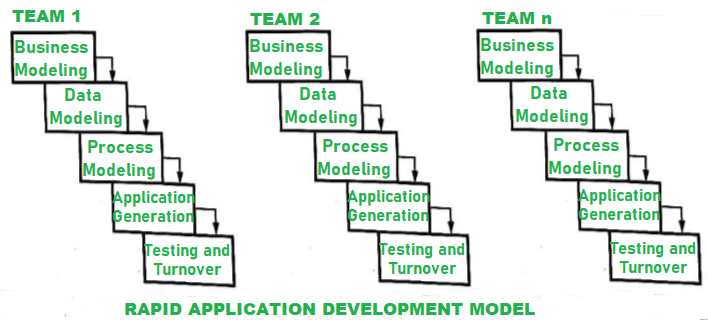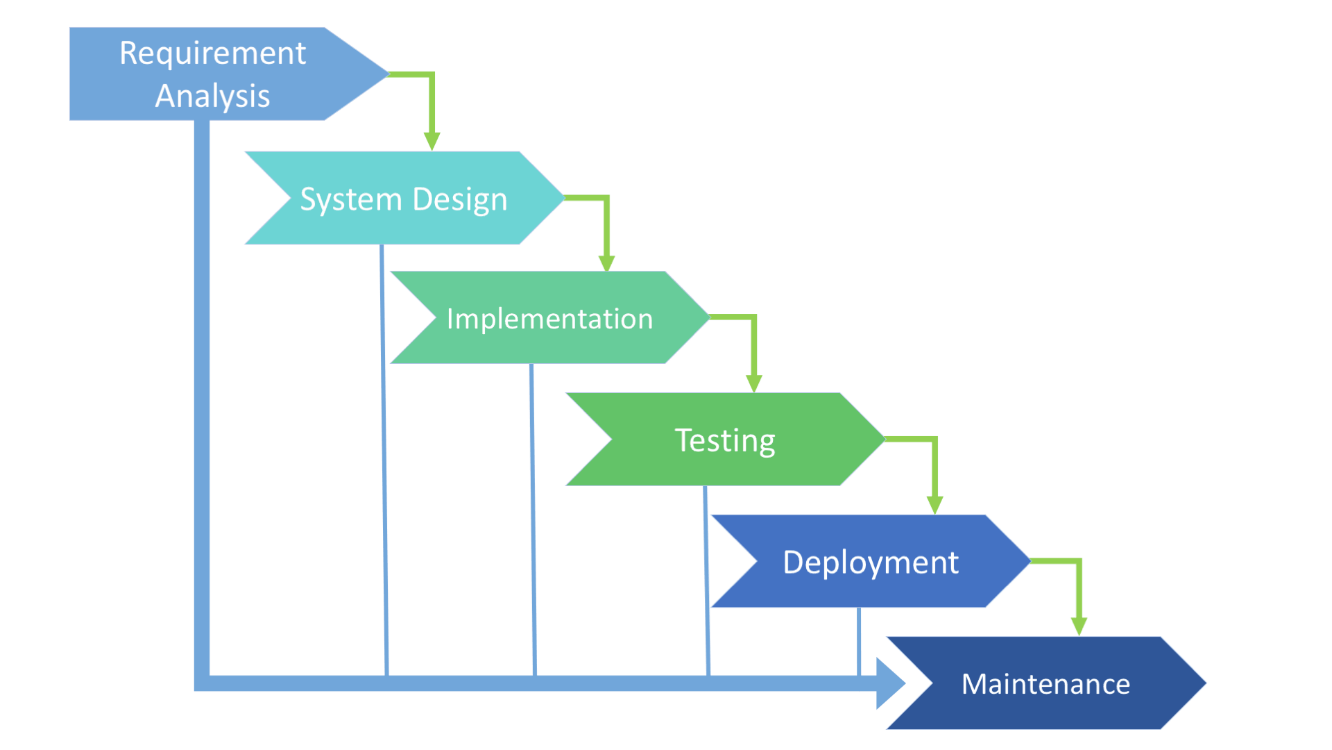RAD Model vs SDLC Model
In this article let us Compare and understand the differences between two different software development models- RAD and SDLC models.
What is the RAD model?
Quick prototyping and iterative development are prioritised by the RAD (Rapid Application Development) approach of software development. Delivering high-quality software products rapidly and effectively is the aim of the RAD model. It is a type of agile software development process that focuses on minimizing the time used in the deploy a software product.
This approach helps to identify problems in the development process and allows developers to make necessary adjustments quickly. The RAD model is particularly useful in those situations where requirements are not well-defined or are likely to change frequently.
The RAD model typically involves the following phases:
- Requirements planning: This phase involves defining the project scope, identifying requirements, and creating a high-level plan.
- User design: In this phase, developers create the user interface and other design elements of the software.
- Construction: This is the development phase where coding and testing are done. The software is developed in small increments, with each increment being tested thoroughly before moving on to the next one.
- Cutover: This is the deployment phase where the software is deployed and transitioned to production.

The RAD model is particularly useful in situations where the end-users are involved in the development process. The RAD paradigm aids in ensuring that the software is swiftly supplied and fits the needs of the end users.
The RAD model, however, might not be appropriate for big or complicated projects that need a lot of planning and organisation. In these situations, other development methodologies, such as the waterfall model, may be more appropriate.
What is the SDLC Model?Top of Form
A framework for describing the many phases of software development is the Software Development Life Cycle (SDLC) model. It is a structured approach to software development that provides a systematic and well-defined process for creating high-quality software products. The SDLC model contains numerous stages, each of which has a distinct set of tasks and outputs.
The stages of the SDLC model include:
- Planning: In this stage, the goals and objectives of the software project are identified, and a plan is developed for achieving those goals. This stage involves creating a project charter, developing a project plan, and identifying project stakeholders.
- Requirements analysis: In this stage, the software project's needs are examined, and a thorough specification is made. In this step, the software's features and functionalities must be identified, along with any restrictions or limitations that must be taken into consideration.
- Design: The software architecture and the specific designs of the software components are developed during this stage.
- Implementation: In this stage, the software is developed and coded according to the design document. Making test plans, carrying out test cases, and recording any flaws or problems discovered are all part of this phase.
- Testing: The software is examined at this point to make sure it satisfies the specifications and operates properly. This stage involves creating test plans, executing test cases, and documenting any defects or issues that are found.
- Deployment: At this point, the software is put into use in a real-world setting, and end users are taught how to utilise it. This stage involves creating user manuals, conducting training sessions, and ensuring that the software is ready for production use.
- Maintenance: As it progresses through this stage, the software is updated and maintained to make sure it continues to satisfy the needs of its users. This stage involves fixing defects, updating features, and making changes as necessary.

This model provides a roadmap for software development that helps to minimize risks, reduce costs, and ensure that high-quality software products are delivered on time and within budget.
Differences between RAD and SDLC models
The folloeing table shows the main differences between the RAD and SDLC model:
| S.No | RAD MODEL | SDLC MODEL |
| 1. | This model emphasizes rapid prototyping and quick feedback from end-users. | This model emphasizes planning, analysis, and documentation. |
| 2. | An iterative and incremental approach is used for development. | A linear and sequential approach is used in this mode for development. |
| 3. | Limited documentation, with a focus on creating working software. | Extensive documentation, with a focus on maintaining consistency and quality. |
| 4. | RAD models require small, co-located teams that work collaboratively. | SDLC models require large, dispersed teams with specialized roles and responsibilities. |
| 5. | Short development cycles, with a focus on delivering software quickly. | Long development cycles, with a focus on ensuring that software is thoroughly tested and meets all requirements. |
| 6. | Limited scope and functionality, with a focus on meeting immediate needs. | Comprehensive scope and functionality, with a focus on meeting all requirements. |
| 7. | End-user involvement throughout the development process. | Little or no end-user involvement, with a focus on delivering a final product that meets all requirements. |
| 8. | This model is best for small to medium-sized projects with changing requirements. | This model is best for large, complex projects with well-defined requirements. |
| 9. | High levels of technical skill and expertise are necessary. | This model can be handled and carried out by a variety of staff members with different degrees of experience. |
| 10. | More flexible and adaptable to changing requirements. | More rigid and less adaptable to changing requirements. |
This is all about the comparison between RAD and SDLC models. Hope you understood this topic.